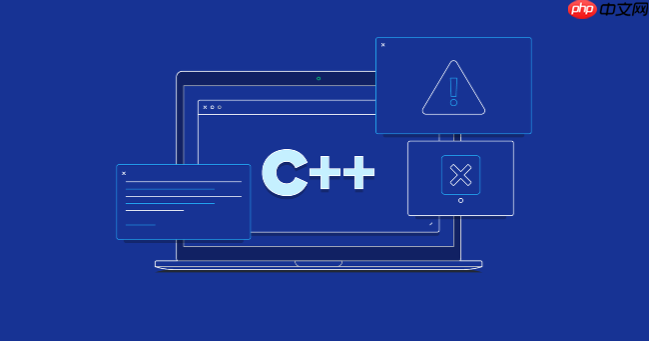答案是:可通过固定列数数组、指针或模板引用传递二维数组。例如,使用void printArray(int arr[][3], int rows)指定列数,编译时需知列宽,再遍历输出元素。

在C++中,将二维数组作为函数参数传递有几种常见方式。由于数组不能直接按值传递,必须通过指针或引用的方式处理。以下是几种实用且清晰的方法。
示例代码:
立即学习“C++免费学习笔记(深入)”;
void printArray(int arr[][3], int rows) {
for (int i = 0; i < rows; ++i) {
for (int j = 0; j < 3; ++j) {
std::cout << arr[i][j] << " ";
}
std::cout << std::endl;
}
}
int main() {
int myArray[2][3] = {{1, 2, 3}, {4, 5, 6}};
printArray(myArray, 2);
return 0;
}
示例代码:
立即学习“C++免费学习笔记(深入)”;
void printArray(int (*arr)[3], int rows) {
for (int i = 0; i < rows; ++i) {
for (int j = 0; j < 3; ++j) {
std::cout << arr[i][j] << " ";
}
std::cout << std::endl;
}
}
示例代码:
立即学习“C++免费学习笔记(深入)”;
template <size_t rows, size_t cols>
void printArray(int (&arr)[rows][cols]) {
for (int i = 0; i < rows; ++i) {
for (int j = 0; j < cols; ++j) {
std::cout << arr[i][j] << " ";
}
std::cout << std::endl;
}
}
示例代码:
立即学习“C++免费学习笔记(深入)”;
void printArray(const std::vector<std::vector<int>>& arr) {
for (const auto& row : arr) {
for (int val : row) {
std::cout << val << " ";
}
std::cout << std::endl;
}
}
基本上就这些常用方法。选择哪种方式取决于你的具体需求:是否知道数组大小、是否需要通用性、是否使用动态数据等。固定大小用前三种,动态场景优先考虑vector。理解这些传参机制有助于写出更清晰、安全的代码。
以上就是c++++中如何将二维数组作为函数参数传递_c++二维数组参数传递方法的详细内容,更多请关注php中文网其它相关文章!

c++怎么学习?c++怎么入门?c++在哪学?c++怎么学才快?不用担心,这里为大家提供了c++速学教程(入门到精通),有需要的小伙伴保存下载就能学习啦!

Copyright 2014-2025 https://www.php.cn/ All Rights Reserved | php.cn | 湘ICP备2023035733号